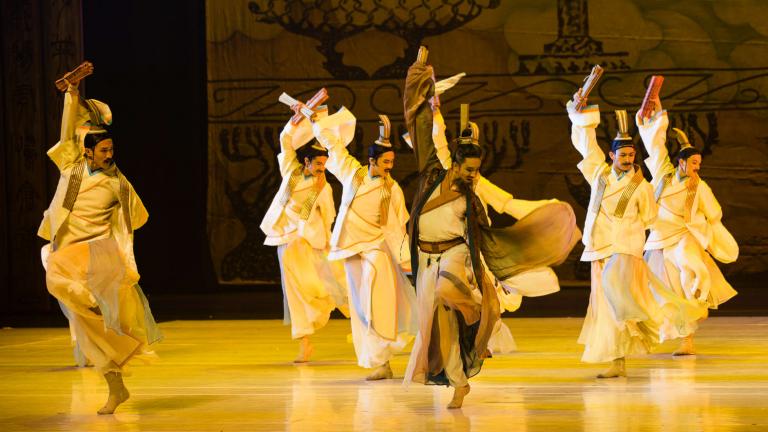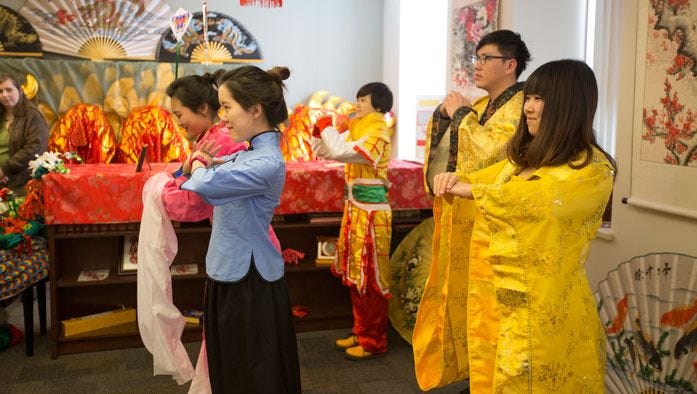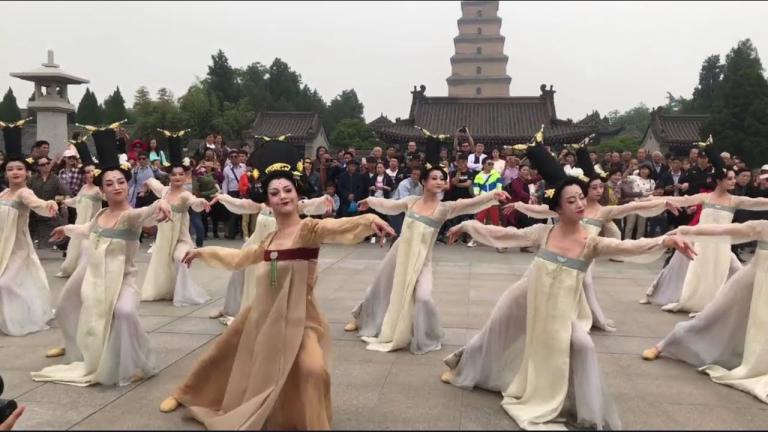Ceremonial Classical Music:Dancing for Rites
4 min readThe Zhou Dynasty is the first period of Chinese dances’great development.According to historical records,Duke Dan of Zhou followed and developed the old rite system of the Xia and Shang dynasties,in which dances were an important aspect.

Therefore,Zhou dances represented the first peak of China’s musical dance culture.In particular,musical dances of previous dynasties popular from the 26th century BC to the 11th century BC were sorted out and standardized in the Zhou Dynasty.This can be called a feat in the history of human culture.Zhou people sorted out five musical dances including Cloud Gate,Dazhang,Dashao and Daxia of the Shang Dynasty and Dahuo of the Shang Dynasty,and created Dawu.They are collectively called”the six dances”.The six dances were mainly for memorial ceremonies,performed by children of the imperial family and aristocratic families.
The first four dances in the six dances were civil dances,i.e.dances showing governance of the country with virtues.The main content of Cloud Gate was praise of the Yellow Emperor’s feats.It is said that the Yellow Emperor created all things,gathered ordinary people,and was virtuous like propitious clouds,hence the title Opening Cloud Gate or Cloud Gate for short.According to textual research,this musical dance was originally a totem dance of the Yellow Emperor’s clan for worshipping cloud totems,and later was performed to eulogize the clan’s earliest ancestor-the Yellow Emperor.Swirling propitious clouds symbolize times of peace and prosperity.

Dazhang eulogized Emperor Yao’s unification of China with heavenly virtue and divine wisdom.Ordinary people depended on him like they depended on the sun and worshipped propitious clouds.”Dazhang”means Emperor Yao’s virtue was so great that it was widely known in the world.This musical dance was also rooted in primitive clan dances.It is said that Yao ordered Zhi to play music,and Zhi composed music and songs by imitating the sound of streams in mountains,forests and valleys,He beat pottery drums and slates(e.g.chime stones used by later generations)rhythmically,and changed the 5-stringed plucked instrument into the 15-stringed plucked instrument.People also disguised themselves as”beasts”and danced.It can be seen that such dances obviously had traces of hunting life.
It is said that Dashao,also called Xiaoshao or Shao for short,was created by a musical official named Kui during the reign of Emperor Shun,the content being praise of Emperor Shun’s virtue comparable to that of Emperor Yao.During its performance,”phoenixes came to watch and all beasts danced”(from Historical Records-Imperial Biographies of Xia Emperors by Sima Qian).Analects of Confucius says:”When the Master was in Qi,he heard Shao,and for three months did not know the taste of flesh.He said,’I did not think that music could have been made as excellent as this.”
This shows Shao was a soul-shaking musical dance with great artistic charm.
The story of”Emperor Yu’s water control”is widely known in China.In decades of hard work,he passed his own door three times without entering.Finally,he dredged the river course and eliminated floods.Gaoyao created Daxia to commemorate Emperor Yu.Dancers should hold short flutes and at the same time wear fur caps and white skirts with their upper bodies naked. The costume was quite consistent with the theme of eulogizing Emperor Yu’s successful water control. Besides, during the performance of the musical dance, laborers’ movements in water control were imitated to show ancestors’ courageous and tenacious spirit of overcoming natural disasters.
The last two dances in “the six dances”were martial dances,i.e. dances showing governance of the country with military accomplishments. It is said that after Emperor Tang of the Shang Dynasty conquered the Xia Dynasty, Yi Yin was ordered to createDahuo,a famous musical dance of the Shang Dynasty, to eulogize the feat of Tang’s war against Jie for peace in the world. In the Zhou Dynasty, it was performed to worship the earliest ancestor Jiang Yuan or all deceased mothers. In the dance, the leading dancer held a big flag decorated with colorful feathers, and the team of dancers entered quietly in darkness, creating a very solemn and mysterious atmosphere.
Dawu emerged in the Western Zhou Dynasty, the content being praise of the war waged by Emperor Wuwang of the Zhou Dynasty against Zhou. It is said the Duke of Zhou created it. Dawu consisting of six sections showed the momentum of great never-losing military strength and a strong atmosphere of war.
In “the six dances”, civil dances and martial dances complemented each other, fully displaying deceased emperors’ excellent governance with virtues and military accomplishments. During performances, people danced with musical instruments and feathers in civil dances and danced with shields and axes in martial dances. Therefore, civil dances and martial dances are collectively called “shield and feather dances”.
After the Xia, Shang and Zhou dynasties, musical dances kept expanding on the basis of traditions with increasingly complicated structures and increasingly exquisite dancing skills, and finally reached the first peak of Chinese dances. Meanwhile, rulersof the Zhou Dynasty collected various ethnic groups’ musical dances in the posture of conquerors, adapted them according to their intentions, and emphasized their rational spirit and political and religious functions to publicize emperors of the Zhou Dynasty as orthodox “virtuous emperors”. This tradition of eulogizing virtue with civil dances and praising accomplishments with martial dances was inherited by the following dynasties in the following thousands of years.









